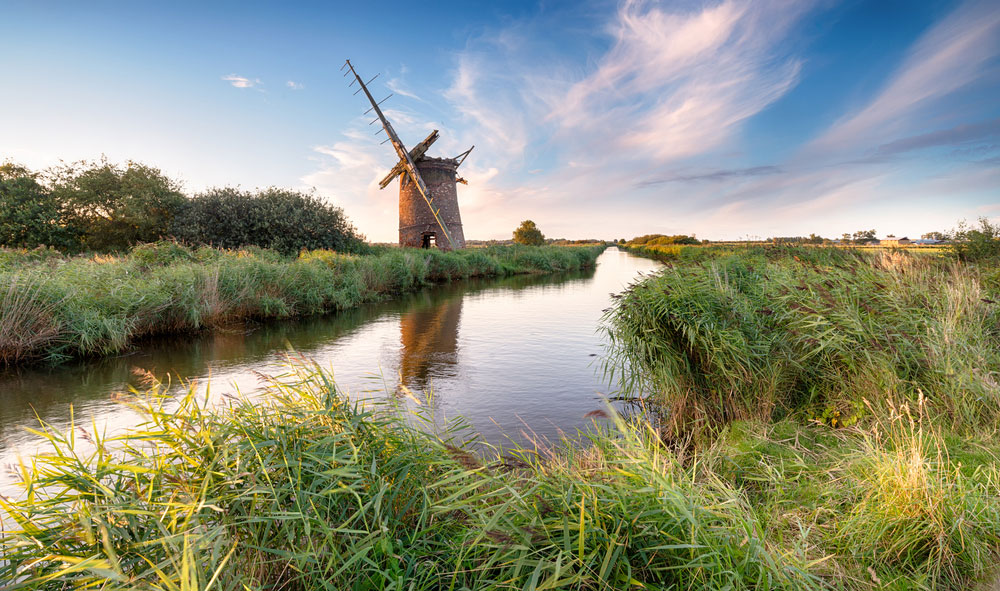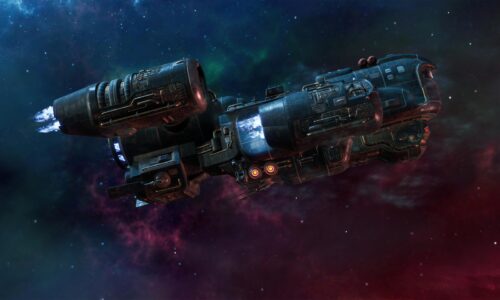
The Future History of Norwich – a Fan Fiction, Part 3
- Uncategorized
- July 26, 2023
Continuing my look at the history of the Star Trek universe as seen from the perspective of Norwich, England. Last time we saw the long road getting to the Federation in the 22nd century. Now we turn to the 23rd and the 24th centuries, far from the frontier…

It is 2259 in Norwich.
The solar panels and windmills are completely gone from the roofs, save as the occasional aesthetic curio. A single anti-matter reactor for powering a modern star ship is also more than capable of serving most of the planet’s needs, beamed wirelessly to receiver stations around the globe.
There are no cars, but a system of hovertrams runs across the city, with individual hovercabs for those who need a specific destination, fast. The tracks have been ripped up at the old train station, and replaced with several municipal sized transporter pads where batches of commuters are beamed in and out the start and end of the day.

Norwich has become a “satellite town”, a place where construction workers, diplomats and scientists commute from to the vast star base being constructed in orbit. You can see it if you’re standing in a back garden, a bright light that stands out even among the interlacing queues of starships, and the sparkling surface of the Moon.
Beyond the city limits, the Norfolk broads are now savannahs, the weather is fully regulated, and the city’s natural-grown food is a welcome treat for travellers used to eating out of a food synthesiser.
The alliance that fought that first interstellar war has grown and spread, fleets of ships have pushed the human frontier further and further out, and everywhere its goes it meets new worlds and civilisations, talks to them, invites them to visit.

Of course, the restored capitals are the most popular destinations, but plenty visit Norwich to get off the beaten track and see the “real” Earth.
Cafes and restaurants open up to cater to alien tourists and commuting orbital workers, as well as the pubs. For the first time since the earliest days of the 21st century, Norwich once again has a pub for every day of the year.
There still a lot of people in uniform- although the navy blues or camo greens have now given way to an assortment of primary colours. That is partly from the starbase construction efforts, but it is also because the further the frontier pushes out, the more pushes back. After that first attack in American, the skies never became truly safe. There are entire civilisations that live only for war. There are species that view humans as cattle, or a place to lay their eggs.
But Earth has moved beyond its early, tentative steps into the unknown. It is more than ready to meet the threat.

It is 2381 in Norwich.
Today, the city looks like a theme park of its 21st century equivalent. The streets and houses have been restored, although someone transported here from 360 years previous would notice they look a lot cleaner. Then they would notice that the cars are gone, as are tv aerials and the telephone wires hanging along the streets. Oddly, telephone boxes seem to be back, although a closer inspection will reveal that these are the transporter booths that can be found on most street corners. The pubs haven’t changed much, and are still populated by old people complaining about the news and the quality of the syntheholic beer, although they are every possible colour and shape.

A little white ago a clever engineer learned to hack transporter technology to create a kind of instant 3D printer, and now there is one in every home. Anyone can now summon any food or object they desire, on demand, for free. The food they produce is indistinguishable from the real thing- worlds away from the shaped goop of the food synthesisers, although some people still claim they can taste the difference. For the first time in nine and a half thousand years, agriculture is not the foundation of human civilisation, but the domain of a few eccentric hobbyists.
Now that farmland is unnecessary, nostalgic geoengineers have begun reflooding the broads to return them to their former glory. It is a process that is being carried out around the world. There are more humans than there have ever been, but they are retreating, allowing the wild spaces to return.

Space continues to be dangerous. The oldest patrons of the pubs will remember being moved to communal bunkers as an entity in a vast blue cloud approached the planet, as well as the other alien probe- the one with the whales. All but the youngest remember anxiously watching footage of approaching alien cubes, the posters warning people their neighbour might be a shapeshifter, or beaming over the San Francisco to help with the recovery effort from the Breen attack.
But every crisis has been responded to with the lessons learned in the aftermath of those nuclear attacks. People band together, care for the most vulnerable, and do what must be done to preserve paradise in universe of wonders and horror.
The houses themselves are spartan to 21st century eyes, but it is the frugality of billionaires. It turns out that when your every possible need is met with ease, people don’t actually want much.

Chris Farnell is the author of the Star Trek Lower Decks U.S.S. Cerritos Crew Handbook, which is available for pre-order now. He lives in Norwich.
He is also the author of Fermi’s Progress, a novel about an FTL ship that vaporises every planet it encounters, but Norwich’s future is much shorter in that one. It is for sale now at Amazon and Scarlet Ferret





